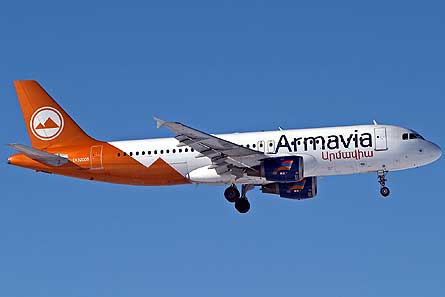By David Kaminski-Morrow in London
Airbus has confirmed details of the A320 operated by Armenian national carrier Armavia that crashed this morning off Russia’s Black Sea coast.
Armavia flight RNV967/U8 967 was headed for Adler airport, which serves the Black Sea resort of Sochi, from its base in Armenian capital Yerevan when it disappeared from radar screens at around 02:15 today. No survivors are being reported from the crash.
|
Russia’s emergency ministry says that wreckage and bodies have been recovered several kilometres from the coastline near Sochi. The ministry says several major wreckage pieces are in water 60m-300m (200-1,000ft) deep.
Russian officials say there were 113 people on board the aircraft including eight members of the crew, although the figure is being updated. Russian officials are quoted as saying weather was poor at the time of the crash and heavy rain was falling. Some reports say the aircraft was on a second landing attempt when it crashed.
According to Flight's fleet database ACAS, Armavia’s A320 fleet comprised three leased examples, built in 1992, 1995 and 1996. The 11-year old CFM56-powered aircraft (EK-32009) had been in the Armenian carrier’s fleet for two years, Airbus says.
Airbus data states that the jet had accumulated over 28,200h across some 14,400 cycles.
The airframer says that it will offer technical support to any inquiry, alongside the French air accident investigation agency Bureau d’Enquêtes et d’Analyses, and is dispatching a team of six to the accident site. “The investigation remains the entire responsibility of the relevant authorities and it would be inappropriate for Airbus to enter into any form of speculation into the cause of the accident,” it adds.
Source: Flight International

















